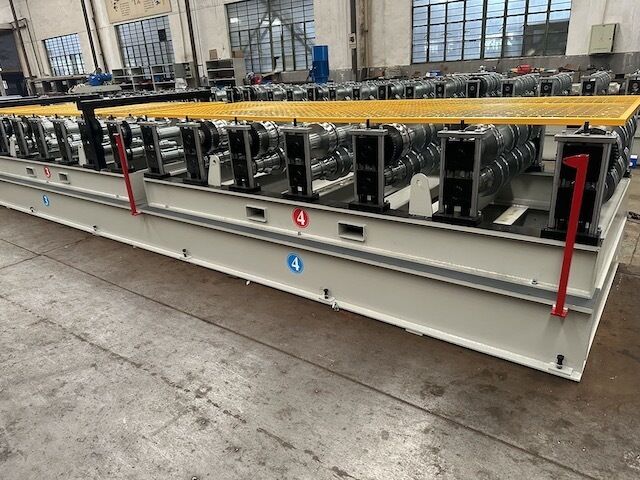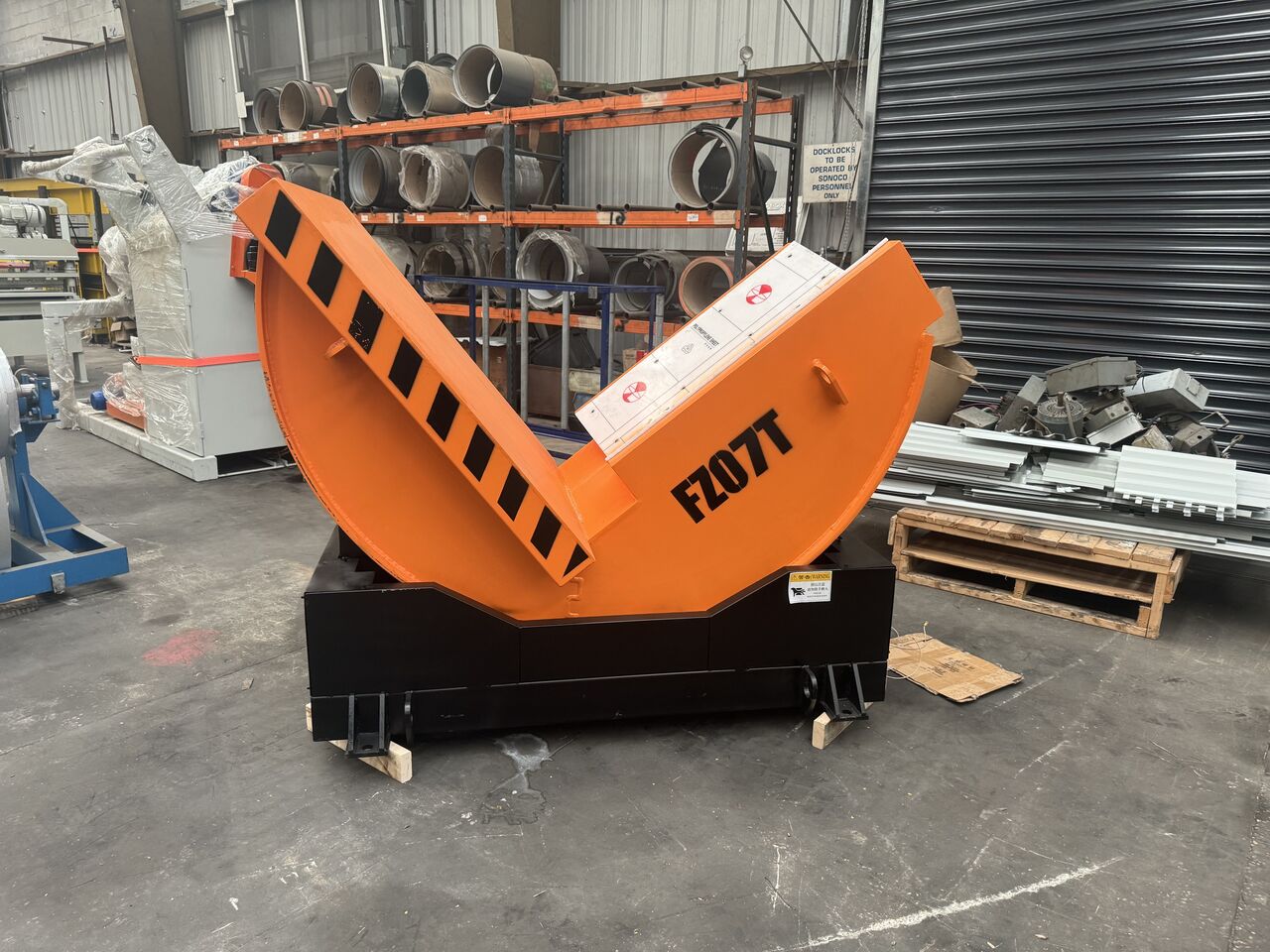2”Composite Metal Deck Machine
Get a Quote
Send us a message and we’ll get back to you shortly.
2" Composite Steel Deck Roll Forming Machine Specifications
- Coil Width:
- Profile: 2" Composite
- Cassette Machine
- Profile size: 2"
- Forming Speed:
- Material thickness: 16g to 22g
- Machine Weight:
- Machine Footprint:
- Main power: 480v 3ph 60hz
- Stations:
- Cutting type: Pre flying shear
- Control system:
- Safety covers: yes
- E Stops
- FOB Orlando, Florida
All roll forming machinery is fully assembled at our factory in Orlando Florida. Our Roll Forming Machines come with a 1 year warranty for parts and labor. All machines will be made to customer personal requirements and profile.
2" Composite Steel Deck Machine Description
A 2" Composite Metal Deck Roll Forming Machine is a piece of equipment used in the construction industry to manufacture composite metal decking panels. Composite metal decking is commonly used in commercial and industrial buildings as a structural component for forming floors and roofs.
Here's an overview of what this machine does and how it works:
- Roll Forming Process: The roll forming machine is designed to take a coil of metal sheet, typically steel, and pass it through a series of rollers. These rollers gradually shape the metal sheet into the desired profile or shape, which, in this case, is the profile of a composite metal decking panel.
- Material Feeding: The coil of metal is usually loaded onto a decoiler at the beginning of the machine. The decoiler feeds the metal sheet into the roll forming section of the machine.
- Roller Stations: The roll forming machine consists of multiple roller stations, each of which has a set of rollers with a specific contour. As the metal sheet passes through these roller stations, it undergoes a gradual forming process. In the case of composite metal decking, this would involve forming the corrugated or ribbed profile that provides strength to the decking panel.
- Cutting: Once the metal sheet has been formed into the desired profile, a cutting mechanism, often a flying cutoff or shear, is used to cut the decking panel to the required length.
- Stacking or Packaging: After cutting, the individual composite metal decking panels are typically stacked or packaged for easy transportation and installation at construction sites.
- Control System: Modern roll forming machines are often equipped with computerized control systems that allow operators to set parameters such as the profile dimensions, length, and speed of production. This ensures precision and consistency in the manufactured panels.
The "2-inch" specification likely refers to the height or depth of the corrugations or ribs in the composite metal decking panel. The specific design and dimensions of the decking panel may vary depending on the manufacturer's requirements or the project's engineering specifications.
These roll forming machines are essential in the construction industry because they enable the efficient production of composite metal decking panels, which are widely used to create stable and durable floors and roofs in various types of buildings. The use of composite metal decking can help reduce construction time and costs while ensuring structural integrity and fire resistance.
2" Composite Steel Deck Profile
A "2-inch Composite Steel Deck Profile" refers to a type of building material used in construction for creating floors and roofs. This profile typically features a corrugated or ribbed design with a depth or height of 2 inches. Composite steel decking is commonly used in commercial and industrial construction projects.
Here are some key characteristics and information about a 2-inch composite steel deck profile:
- Material: It is typically made from steel, which is a strong and durable material suitable for structural applications. The steel used in composite decking is often galvanized to protect against corrosion.
- Profile: The "2-inch" dimension refers to the depth or height of the corrugations or ribs in the decking panel. This profile provides the necessary structural strength to support loads and distribute them evenly across the floor or roof.
- Composite Nature: Composite steel decking panels are often composite in nature, meaning they consist of two main components: the steel sheet and a layer of concrete or another suitable material. The concrete layer is poured onto the corrugated steel deck to create a composite floor or roof structure.
- Strength and Load-Bearing Capacity: Composite steel decking panels are designed to provide excellent load-bearing capacity, making them suitable for a wide range of applications. They can support the weight of equipment, machinery, and people in commercial and industrial buildings.
- Fire Resistance: Many composite steel decking panels are designed to be fire-resistant, which is crucial for safety in building construction. The steel core provides structural strength, while the concrete layer contributes to fire resistance.
- Ease of Installation: Composite steel decking panels are relatively easy to install. They come in standard sizes and can be quickly laid out and secured to the building's steel frame.
- Acoustic Properties: Depending on the specific design and materials used, composite steel decking can also provide acoustic insulation, reducing noise transmission between floors.
- Corrugated Design: The corrugated or ribbed design of the decking panel not only adds strength but also provides stiffness, reducing the need for additional supports and beams.
- Customization: While a "2-inch" profile is a common standard size, composite steel decking can come in various depths and configurations to meet specific engineering and design requirements.
Overall, a 2-inch composite steel deck profile is a versatile building material used for creating sturdy and durable floors and roofs in commercial, industrial, and sometimes residential construction projects. It offers a balance of strength, fire resistance, and ease of installation, making it a popular choice in the construction industry.





















